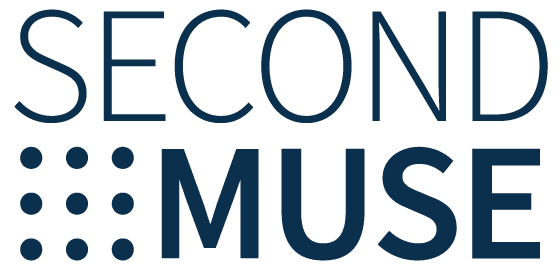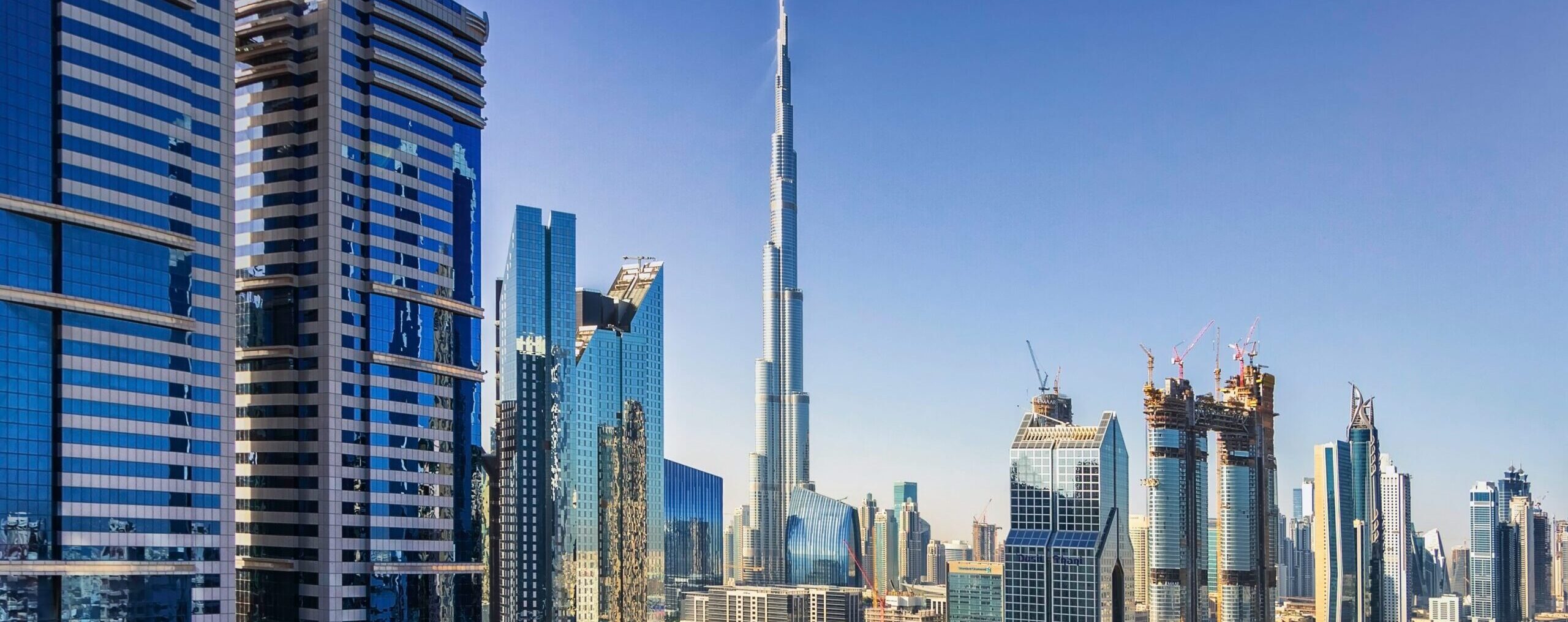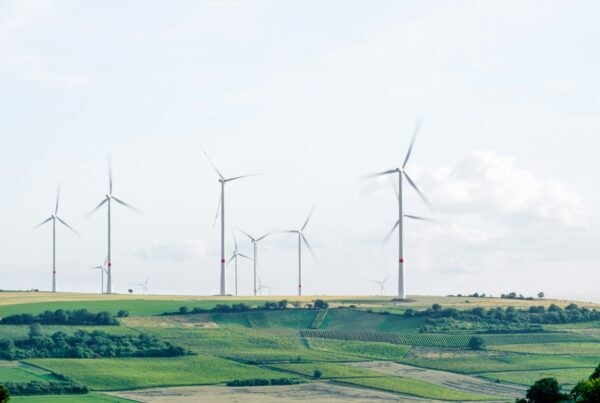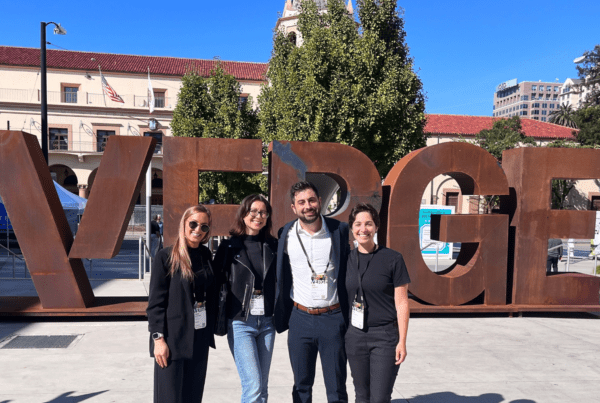Following COP28 in Dubai, Simon Baldwin, Senior Vice President for Asia Pacific, and Angela Noronha, Regional Director of Growth, share key takeaways and observations on collaborative climate solutions, navigating deadlocks and fostering inclusivity.
Nearly two-months after COP28 wrapped in Dubai the discourse remains convoluted. In the weeks that followed, we have seen much said about the 100,000+ delegates in attendance (and the emissions that entails), those who boycotted due to the U.A.E’s political controversies and social inequalities, and the reality that as a society we are off track to meet the Paris Agreement to keep global warming under 1.5 degrees Celsius. Despite the highs and lows, we at SecondMuse are focused on what we do best: identifying a collaborative and inclusive path forward.
This summit, we saw more businesses, students, civil society organizations, investors, and politicians than ever before in attendance. Many previously silent voices made themselves heard and took their seat at the table allowing new partnerships to form, plans to take shape, ambitions to grow, tough conversations to take place, and most importantly – more actors to continue the fight once the two week conference concluded.
We had three teammates on the ground representing SecondMuse’s work across not only climate but also equity and technology: Simon Baldwin – Senior Vice President (Asia Pacific), Angela Noronha – our Regional Director of Growth, and Alexis Juday Marshall – Senior Grant Writer at SecondMuse and Board Member at the League of Women Voters spent two-weeks engaging with key players and stakeholders. Our colleagues in attendance left the conference feeling cautiously optimistic about the paths forward in addressing the climate crisis. Here are a few observations and takeaways from their time in Dubai:
Deadlocks, Breakthroughs, and Small Steps
World leaders agreed on a few key things at COP28: tripling renewable energy capacity by 2030 and investing millions into the Loss & Damage Fund to name a few. However, other matters—particularly the language that would have called for a full “phase out” of coal, oil, and natural gas—were hotly contested, leading to 3am finishes at in the Blue Zone, multiple drafts of the Global Stocktake, and a leaked letter from OPEC leadership directly urging members to “proactively reject any text or formula that targets energy i.e. fossil fuels rather than emissions.” Pairs of ministers were called in to oversee the final negotiations ending in a consensus that, while historic in its first ever agreement to transition away from fossil fuels, still felt to many like a poor compromise. Despite the weakened language, UN Secretary General Antonio Guterres remarked: “I want to say that a fossil fuel phase out is inevitable whether they like it or not. Let’s hope it doesn’t come too late.”
Beyond the official text negotiations, there were other signs that different parties are more willing to set aside their biases and listen to one another. Angela noted that young activists seem to be getting more sophisticated, moving away from absolutist rhetoric and acknowledging that governments have valid concerns around energy needs; there’s a new awareness that change will take time and requires buy-in, as well as greater readiness from business leaders to admit that they are part of the problem – which means that they need to be part of the solution.
Simon welcomed the chance to engage with both civil society and the private sector, exploring the tensions between capitalist forces and community values as indigenous groups joined conversations around the carbon offset market. For Simon, the discussions provided insights into how partnerships between local groups and large-scale green energy projects can play out over time – not as binary win-lose propositions but rather a chance to find collaborative solutions. “I appreciated that community voices were not presented as monolithic, but instead, we were given the chance to interact with a plurality of nuanced views from a range of people…It was a really tangible example of the vision that I have for how I want to work with communities around the region,” he noted, explaining, “We’re intent on listening to their desires, their needs, and their culture, and supporting them with tools to interface with modern technology.”
Overall, there was a shared intent to move beyond diagnosing problems and to focus on finding solutions. For SecondMuse, this shift in energy feels especially exciting and echoes our long-standing drive to work in that ambit. Unblocking bottlenecks and increasing access for communities and private innovators are pivotal steps towards these goals.
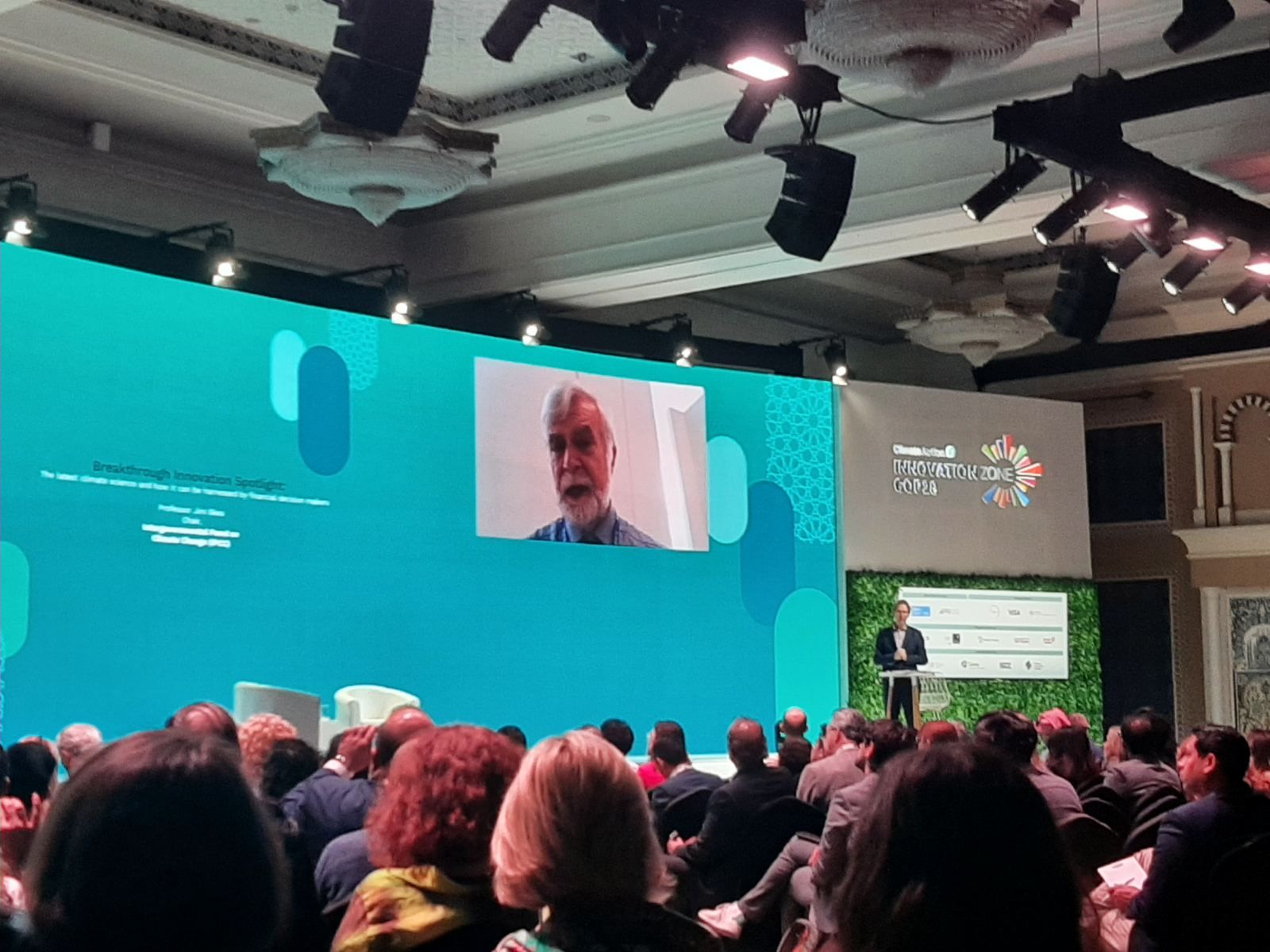
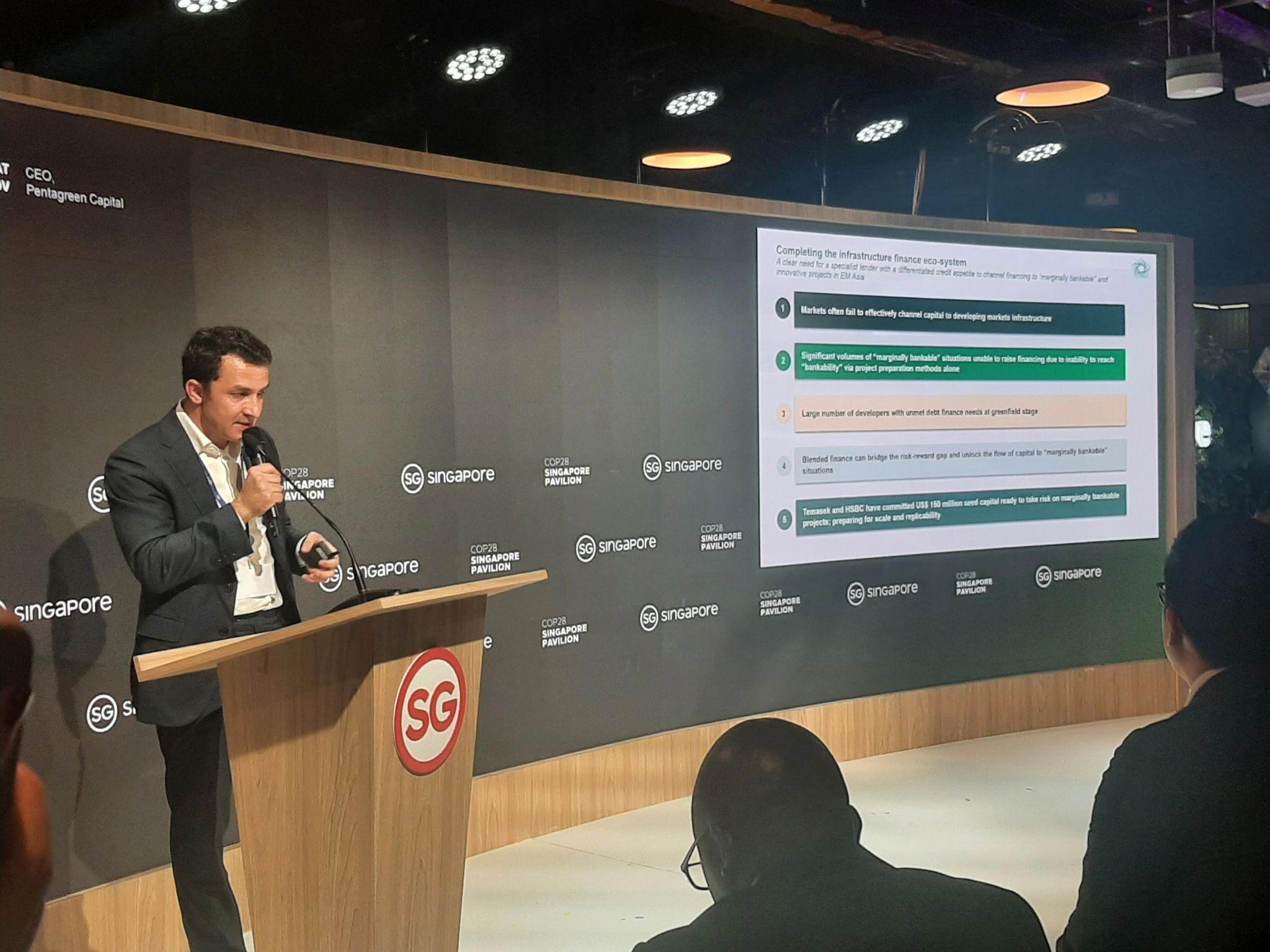
Leveling The Playing Field for Innovators to Scale
One of the great strengths of COP28 is in the way it brings people together. Innovators can swap notes with finance ministers; or trade views with UNOPS officials. It’s an attempt to level the playing field and an invitation to dialogue outside of the usual hierarchy.
Angela: It was great to see more innovators with a seat at the table, shaping the discourse for certain parts of the climate negotiations. But there’s still a large gap between those with capital and decision making power, and smaller innovators trying but struggling to be part of the global solution; speaking with both sides at the conference was critical to understanding that gap better, so we can help bridge it.
The Green Climate Fund, for example, can sometimes feel like an exclusive club out of reach for early-stage innovators due to the large ticket sizes; we heard as much at several side events where Q&As had small project organizers engaging representatives of the four large climate funds. Access may have been an issue to date, but the fund reps seemed genuinely willing to listen and clarify what type of work gets them excited and funds flowing. Innovators should consider operating in a broader sphere, creating more expansive goals or working in aggregate with other actors to scale investment asks to a size that contributes meaningful impact and thus merits GCF’s attention—which means structuring projects to reach social justice goals as well as emission reduction targets, building in space for the private sector, end-to-end value chain approaches, and laddering up projects to investments of at least $50 million.
Climate Finance is evolving but not yet where it needs to be
Throughout COP28, there was a palpable urgency around the climate finance gap and the need for new approaches to solving it. There were some good signs in that direction: with leaders like John Kerry calling for a re-imagining of carbon markets, the heads of all four Big Climate Funds coming together to announce joint initiatives and solicit feedback, governments like Singapore announcing blended finance initiatives and carbon project development deals with more countries every day, and dynamic discussions around innovative mechanisms… but actions speak louder than words. Real financial commitments still fall far short of the estimated trillions of dollars required annually to transition the world’s energy and economic systems, so we clearly have not yet cracked the code to engaging private financial markets.
SecondMuse is bullish on blended finance playing a large role in fixing that. Until more climate technologies become as widely proven and high performing as solar and offshore wind (which now enjoy large scale project and infrastructure finance), public and philanthropic capital can and must step up to take on risks that private capital is not yet willing to, while deliberately de-risking these new business models to set up for stronger growth and private investment readiness down the road. This is much easier said than done, however, and still taking place at a relatively small scale; that’s why SecondMuse and many other actors are working closely with philanthropists, impact fund managers, governments, and private investors to understand what it takes to surface and reduce risks, structure partnerships that allow each actor to do what they do best, set these climate solutions up to generate impact in financially sustainable ways, and in so doing scale up capital flows into the space.
Breaking Down Silos and Making Big Bets
We’ve attempted to tackle this multifaceted challenge in different ways. One of our Future Economy Labs is designing blended finance mechanisms to fund women-led, climate-smart SMEs in South and Southeast Asia, in partnership with the Visa Foundation. Programs with the IKEA Foundation and Australia’s national research agency CSIRO focus on building entrepreneurial capacity and growing pipelines of impactful, self-sustaining, investable businesses preventing plastic pollution. Our Venture for ClimateTech project recruits promising innovators and provides them with the financial support needed to launch their climate tech business and find long-term investment; its sister program Scale for ClimateTech, focuses on de-risking hardware scale-ups and plugging them into New York’s industry and investment networks. Beyond supporting entrepreneurs and creating new financial instruments, we also saw a need to help existing funders better identify investment opportunities, particularly to ensure they go where there is great need (not only great hype), increase visibility of diverse and minority founders, and highlight climate tech entrepreneurs who might be less well-networked; the Climate Co-Investment Tracker provides a big-picture view of the funding flows, gaps, and opportunities in the climate finance space so that funders can make targeted investments in today’s most promising technology.
We’re trying and doing many exciting things, but we know it’s not enough. No single actor could ever solve this mega-crisis on their own; that’s why collaboration, community, and “forging the future through collective effort”—things that have been central to SecondMuse’s work for over a decade—are more important now than ever before.
For us, attending COP28 was a way to build connections, learn from communities, assess gaps in the global fight, and re-calibrate our strategy if needed to make the greatest possible impact. Our colleagues came away from COP28 feeling confident that our work can help to fill at least some of those gaps, and feeling inspired by partners old and new that we cannot wait to build the future with.
That is why we’re redoubling our efforts to build up the kinds of businesses that offer real solutions to the climate crisis, design new innovative pathways into climate finance that traditional philanthropists and private investors can feel comfortable with, co-create ambitious plans for more nature-positive and inclusive economies with partner governments dealing with deforestation, and bake greater equity and inclusion into each of these efforts—while welcoming more partners to join us along the way. If you’re working on a solution to the climate crisis, please get in touch with our For Climate Tech project. If you’re an impact or angel investor, a capital provider, or a representative of a development finance institute, we would love to have you partner with us.

